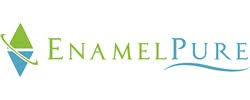Jun 5, 2024
PowerPoint presentations are a staple of modern communication, yet many fail to deliver their message effectively. The term "Death by PowerPoint" describes the all-too-common experience of dull, confusing, or overly complicated slides that disengage the audience. David JP Phillips, an expert in presentation skills, offers insights into avoiding these pitfalls. His approach focuses on five design principles that can transform your PowerPoint slides into powerful tools for communication.
David's approach caters to the overall aspect of a pitch or a presentation. Here at Pitch Deck Edge, we take his tips on design, layout and eye travel very seriously.
The One Message Rule
One of the most critical principles Phillips emphasizes is the "One Message Rule." Each slide should convey a single, clear message. This simplicity helps the audience focus and better retain the information presented.
Why One Message Per Slide?
Human attention is limited. When multiple messages are presented on a single slide, the audience's attention is split, reducing the likelihood of retaining any of the information. Phillips compares this to trying to follow a conversation at a noisy party. If you hear your name mentioned in another conversation, your attention will shift, leaving you nodding along to the current discussion without really listening.
Practical Tips for Implementing One Message Per Slide
Identify the Core Message: Before creating a slide, determine the key point you want to convey. This will help you stay focused and ensure clarity.
Simplify Content: Avoid the temptation to cram multiple ideas into one slide. Break complex information into several slides if needed.
Visual Hierarchy: Use design elements like size and contrast to highlight the main message, making it immediately apparent to your audience.
By adhering to the One Message Rule, you ensure that your audience can easily grasp and remember the key points of your presentation.
Working Memory Limitations
Understanding the limitations of human working memory is essential for creating effective PowerPoint slides. Phillips explains that our working memory is surprisingly limited, often leading to information being forgotten almost immediately.
The Redundancy Effect
Phillips highlights the redundancy effect, which occurs when the same information is presented simultaneously in both verbal and written form. This overlap can overload the audience's working memory, resulting in almost zero retention of the information. For example, if a slide is filled with text that is read out loud by the presenter, the audience struggles to process both the written and spoken words, leading to poor recall.
Practical Tips for Managing Working Memory
Minimize Text: Use minimal text on slides. Instead of full sentences, opt for short, concise phrases or bullet points that complement your verbal presentation.
Visual Aids: Utilize images, diagrams, and other visual aids to support your message. These elements can enhance understanding without overloading the audience's memory.
Speaker Notes: Place detailed text or script in the speaker notes section of PowerPoint. This keeps the main slide clean and focused while providing you with the necessary information to elaborate verbally.
By acknowledging and accommodating the limitations of working memory, you can create presentations that are easier for your audience to follow and remember.
The Importance of Size
In his presentation, Phillips stresses the importance of size in capturing and directing the audience's attention. Human brains are naturally drawn to larger objects, making it crucial to use size strategically in PowerPoint slides.
How Size Affects Attention
Phillips explains that our visual system prioritizes large objects, moving objects, high-contrast items, and signaling colors like red and yellow. In the context of PowerPoint, this means that the size of text and images can significantly influence what your audience focuses on.
Common Mistakes
One common mistake is making the title of each slide the largest element. While titles are important, they are rarely the most critical part of the slide's content. If the title is the largest text, the audience's attention will be drawn there instead of to the key information you want to convey.
Practical Tips for Using Size Effectively
Prioritize Key Information: Ensure that the most important part of your slide is the largest element. This could be a key statistic, a critical point, or a significant image.
Reduce Title Size: Make the title smaller if it is not the main focus. This allows the audience to naturally gravitate towards the more important content.
Consistent Use of Size: Be consistent in how you use size across your slides. This consistency helps the audience quickly identify and focus on the most critical parts of each slide.
By strategically using size to highlight the most important information, you can guide your audience’s attention more effectively and ensure that they retain the key points of your presentation.
Utilizing Contrast
Contrast is a powerful tool in PowerPoint design, capable of directing the audience's focus and enhancing the overall readability of your slides. Phillips emphasizes the importance of using contrast effectively to guide the viewer’s attention to the most critical elements.
Why Contrast Matters
Contrast works by creating a visual distinction between elements on a slide. High contrast can make specific parts of the slide stand out, while low contrast can cause important information to blend into the background, making it harder for the audience to discern the key points.
Practical Tips for Effective Contrast
Highlight Key Points: Use high contrast to highlight the most important points or data on your slide. For example, if you have a list of bullet points, use a different color or bold font for the key points you want to emphasize.
Avoid Overcrowding: Too many contrasting elements can be overwhelming. Use contrast sparingly and strategically to draw attention without causing visual clutter.
Dark Backgrounds: Phillips recommends using dark backgrounds for slides, which can help the presenter stand out and ensure that the audience focuses more on the presenter than the screen. Light text on a dark background can also be easier to read in a dimly lit room.
Examples of Good Contrast Usage
Text and Background: Ensure there is sufficient contrast between your text and the background color. Dark text on a light background or light text on a dark background works best.
Key Data Points: If you have a chart or graph, use a contrasting color to highlight the most critical data points, making them stand out from the rest of the information.
By effectively utilizing contrast, you can create slides that are visually appealing and easy for your audience to follow, ensuring that the most important information stands out clearly.
Managing the Number of Objects
One of the most significant principles Phillips discusses is the management of the number of objects on a slide. Overloading a slide with too many elements can overwhelm the audience, making it difficult for them to process the information effectively.
The Cognitive Load of Multiple Objects
Phillips explains that the human brain has a limited capacity for processing information, known as cognitive load. When a slide contains too many objects, such as text boxes, images, graphs, and other elements, it requires more cognitive resources to understand, leading to fatigue and disengagement.
The Magic Number Six
Through his research, Phillips has determined that six is the optimal number of objects per slide. This number strikes a balance between providing enough information to be useful and not overwhelming the audience.
Practical Tips for Managing Objects
Limit Objects: Aim to have no more than six objects per slide. This includes text boxes, images, graphs, and any other visual elements.
Combine Information: Where possible, combine information to reduce the number of objects. For example, instead of having separate text boxes for each bullet point, combine them into one well-organized list.
Use Multiple Slides: Don’t be afraid to spread information across multiple slides. It’s better to have more slides with fewer objects than to cram too much onto one slide. This approach keeps each slide clean and easy to understand.
Example of Effective Object Management
Before: A slide with sixteen different elements, including multiple charts, long paragraphs of text, and several images. After: The same content spread across three slides, each with a clear focus and no more than six objects. This makes each slide more digestible and visually appealing.
By managing the number of objects on your slides, you can reduce cognitive load and make your presentation more engaging and effective.
Conclusion
Creating effective PowerPoint presentations is both an art and a science. By following the five design principles outlined by David JP Phillips, you can significantly enhance the clarity and impact of your presentations. Here’s a quick recap:
One Message Per Slide: Simplify your slides to focus on a single, clear message. This helps your audience retain the information and stay engaged.
Respect Working Memory Limitations: Minimize text and avoid reading directly from your slides. Use visual aids to complement your spoken words.
Strategic Use of Size: Make the most important elements on your slides the largest. This naturally draws your audience’s attention to what matters most.
Effective Use of Contrast: Use contrast to highlight key points and direct focus. Opt for dark backgrounds with light text to ensure readability and maintain the audience’s attention on you, the presenter.
Manage the Number of Objects: Limit the number of objects on each slide to six or fewer. Spread information across multiple slides to avoid overwhelming your audience.
Implementing these principles can transform your presentations from tedious and forgettable to engaging and memorable. As you prepare your next PowerPoint, keep these tips in mind to ensure that your message is delivered clearly and effectively, avoiding the dreaded "Death by PowerPoint."
By adopting these strategies, you can enhance your communication, making your presentations not just informative, but also impactful and memorable. Remember, the goal is to connect with your audience and leave a lasting impression, and these principles are your tools to achieve that.
Simon Mansell
Founder

Nathan Monty
Founder, Enamel Pure



